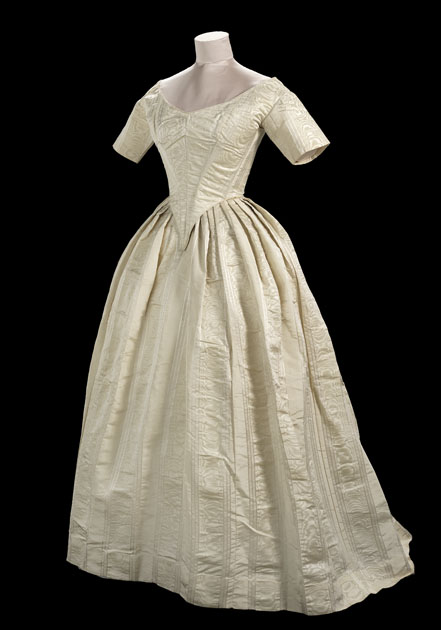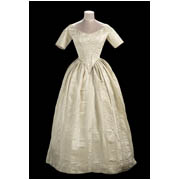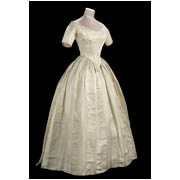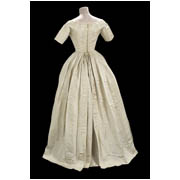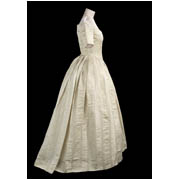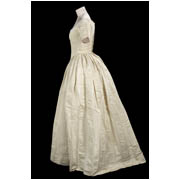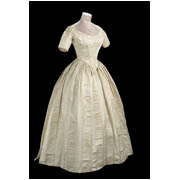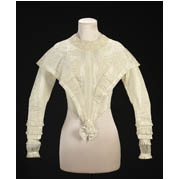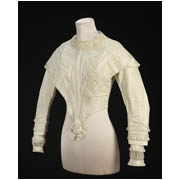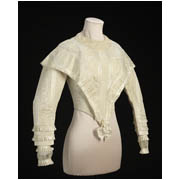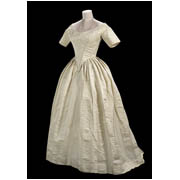Details
- Object type
dress; wedding dress; evening dress
- Date
1846
- Materials
silk
- Description
-
Woman’s dress, wedding dress and robe à transformation with interchangeable day bodice (E.1986.19.a), evening bodice (E.1986.19.b) and matching skirt (E.1985.19.c), in white silk with moiré stripes. Day or wedding bodice with round neckline trimmed with white lace pelerine style panels from upper arm to centre front bodice, trimmed with pleated bands of white silk. Fitted bodice with deep v-shaped front at waistline with seven bones, bow at lower front, fastening centre back with thirteen buttons and loops, bow at bottom. Full-length sleeves, tapering to wrist, trimmed with four pleated bands of white silk, lower sleeves in white net. Fully lined with white silk. Evening bodice with very wide v-shaped neckline, fitted bodice with seven bones and deep pointed waistline, fastening centre back with twelve hooks and eyes, short straight sleeves. Skirt, full-length, pleated into white cotton waistband with centre back opening, hook and eye and tie fastening. Bodices lined in white silk, skirt unlined.
This outfit was purchased for Glasgow Museums' collection, despite having no provenance, as it is an excellent example of an early Victorian white wedding dress. Whilst white wedding dresses had been worn by some brides during the 1700s and early 1800s, Queen Victoria's decision as a royal bride to wear light cream silk rather than cloth of silver when she married Prince Albert on 10 February 1840 is often said to have popularised the tradition. This example includes not only a day bodice with high neckline and long sleeves for the wedding itself, but a second bodice with low, wide décolletage and short sleeves that would have been worn with the skirt for evening wear in the subsequent months.
- Credit Line/Donor
Museum Purchase, 1985
- ID Number
E.1985.19
- Location
Kelvingrove Looking at Design
